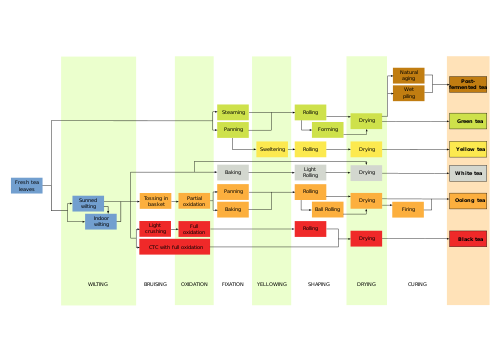
Back صناعة الشاي Arabic চা প্রক্রিয়াজাতকরণ Bengali/Bangla Production du thé French עיבוד תה HE Pengolahan teh ID 茶業 Japanese ടീ പ്രോസസ്സിംഗ് Malayalam Produção de chá Portuguese การแปรรูปชา Thai

Tea processing is the method in which the leaves from the tea plant Camellia sinensis are transformed into the dried leaves for brewing tea.
The categories of tea are distinguished by the processing they undergo. In its most general form, tea processing involves different manners and degrees of oxidation of the leaves, stopping the oxidation, forming the tea and drying it.
The innate flavor of the dried tea leaves is determined by the type of cultivar of the tea bush, the quality of the plucked tea leaves, and the manner and quality of the production processing they undergo. After processing, a tea may be blended with other teas or mixed with flavourants to alter the flavor of the final tea. When producing black, pu'erh and oolong teas there is an additional purpose of processing: to encourage oxidization, which further develops flavour and aroma compounds.[1]
- ^ Smith, Krisi (2016). World Atlas of Tea. Great Britain: Mitchell Beazley. p. 45. ISBN 978-1-78472-124-4.